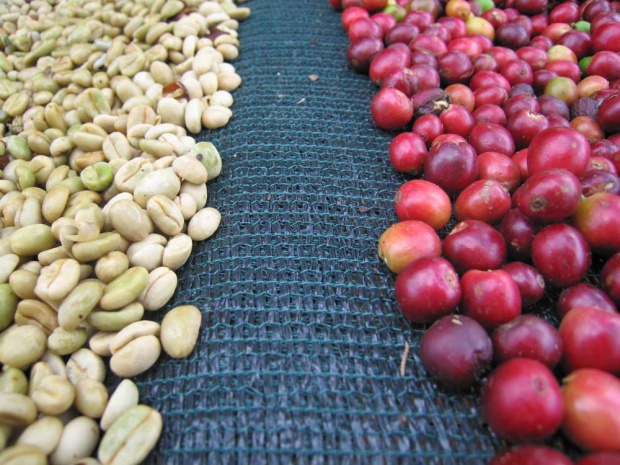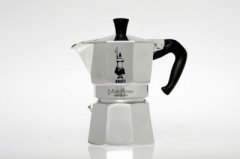The treatment of Coffee Fruit: the difference between semi-washing and washing

For professional baristas, please follow the coffee workshop (Wechat official account cafe_style)
The harvest time of coffee fruit produced in different countries and regions is different. It is usually harvested when the coffee fruit is ripe bright red after 8 months of flower thickness, which is called "coffee cherry" (coffee cherries). The definition of treatment refers to the removal of coffee cherry exocarp, except pulp, endocarp, silver peel. Wait for five parts, and finally get the coffee beans. Generally speaking, there are five ways to treat coffee cherries into raw coffee beans, which are:
Washing treatment (Wet/Washed Process), sun treatment (Dry/Natural/Unwashed Process), half-sun treatment (Pulped Nattural), semi-washing treatment (Semi-washed), honey treatment (Honey Process/Miel Process), the following three familiar methods:
1. Washing method (Wet process/Washed method):
Washed beans account for about 70% of all coffee. The technology invented by the Dutch in the 18th century is suitable for rainy areas. The coffee treated by water washing has a bright and clean taste, strong sour taste, weak consistency and less impurities.
First, add a lot of water to the coffee cherries, rinse away the unfinished fruits and impurities floating on the surface, select beans, and then use a peeling machine to remove the peel and pulp. Then put it into the fermentor to ferment 18Murray for 36 hours to make the fermented bacteria dissolve the pectin on the surface of the coffee cherry, wash it with clean water, dry it for 3 weeks and then dry it with a machine, and use a sheller to remove the endocarp, peel, seed shell and silver film, which is quite cumbersome.
Washed beans are bluish green in color and beautiful in appearance. Coffee from Guatemala, Colombia, Blue Mountains, Kona, Kenya, Java and Panama are all washed beans.
two。 Semi-washing method (Semi washed method):
The flavor of semi-washed coffee is between sun-washing and water-washing. This method is popular in Indonesia. Mantenin uses more semi-washing methods, and Brazil has also begun to use semi-washing methods in recent years.
The semi-washing method is similar to the water washing method, first removing the outer skin and part of the pulp of the coffee cherry berries, then drying the berries, making the berries dry and then moistening them, and then using a special machine to grind off the pulp and remove the seeds.
3. Sun exposure (Dry process/Natural method):
Arabs have treated coffee in this way since the beginning of the habit of drinking coffee, that is, more than a thousand years ago. Sun-cured coffee has a soft sour taste and a uniform bitter taste, and has a high consistency.
The method of treatment is that the coffee cherry is harvested and exposed to the sun for 4 weeks, and it is turned evenly several times a day, so that the coffee cherry is uniformly heated, the core and skin of the coffee fruit will be separated after drying, and then the pulp and peel will be removed by a sheller, and the screening will be completed.
Sun-cured beans have a better flavor, but are prone to defects in appearance. Coffee beans from Moka in Yemen, Hara in Ethiopia, Brazil and Sulawesi in Indonesia are often treated with this method.
Important Notice :
前街咖啡 FrontStreet Coffee has moved to new addredd:
FrontStreet Coffee Address: 315,Donghua East Road,GuangZhou
Tel:020 38364473
- Prev

Beginners, seven basic elements of brewing coffee
Professional barista communication please pay attention to the coffee workshop (Wechat official account cafe_style) to drink a cup of coffee with charming flavor does not necessarily need to be very good at choosing beans, but you need to pay attention to seven basic elements, a few simple words but a profound knowledge, each accurate handling may not necessarily produce the same flavor, so it requires constant pondering in order to become a coffee master.
- Next

Pictorial course of steam coffee in mocha pot
A little more time to prepare a different flavor, like Italy as warm, strong, simple way, passionate feeling. Prepare utensils: mocha pot, small gas stove or induction cooker, coffee cup. Prepare materials: coffee powder, hot water. The step of brewing and boiling: pour the pot with water first. Fill the filter with coffee powder, gently pat, gently press, and then place under the pot. Lock the upper and lower pots to
Related
- What is the meaning of lactic acid fermentation with coffee bean treatment?
- How to judge the state of foam by sound?
- How does the latte pull out the unicorn pattern? Come to get for a little trick to improve the flower pull!
- Will flower pulling affect the taste of the latte?
- Do you know the history of coffee?
- The difference between honey treatment and sun washing what is raisin honey treatment?
- What kind of milk can a novice use to make coffee foam to keep the foam longer? The correct method and skills of milking tutorial sharing
- Why do washed coffee beans taste sour? Flavor characteristics of washed Coffee
- Introduction to the skill of how to practice the size and height of water injection around the circle of hand-brewed coffee
- How do beginners practice coffee flower drawing from scratch?

